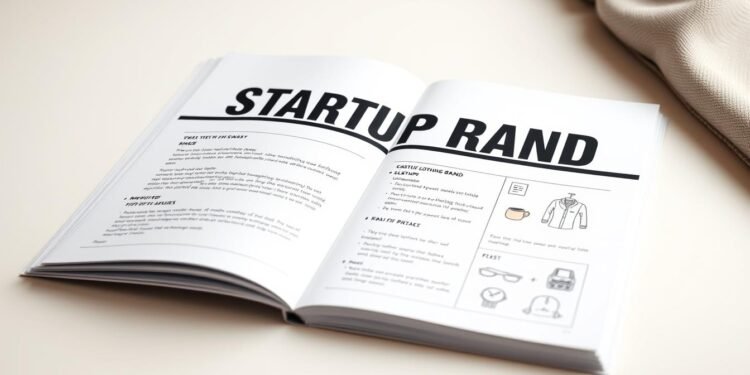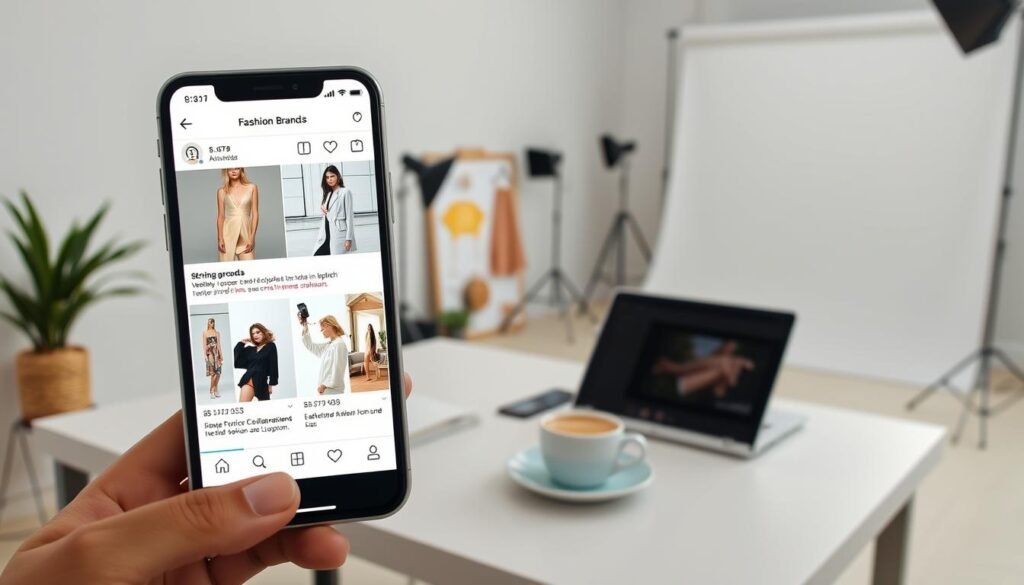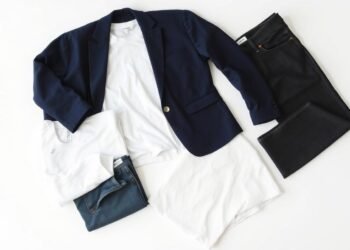Ever wondered why some fashion brands skyrocket while others fade fast? The answer lies in smart planning and a solid foundation. Launching a successful clothing brand isn’t just about creativity—it’s a mix of strategy, market research, and execution.
Industry expert Sarah Donofrio highlights that 60% of new fashion businesses fail within the first year. The difference? A clear roadmap. From identifying your niche to crafting a unique brand identity, every step matters.
This guide breaks down the 15-step process to turn your vision into a thriving business. Whether you’re designing streetwear or luxury apparel, the right approach ensures long-term success.
Key Takeaways
- Balancing creativity with business strategy is critical for success.
- 60% of new fashion brands fail within the first year.
- A clear 15-step roadmap simplifies the launch process.
- Niche identification separates standout brands from competitors.
- Expert insights from Sarah Donofrio provide actionable guidance.
Introduction
The fashion industry sees thousands of new labels emerge annually, yet few survive beyond their first collection. Third Source reports that most fail within months, overwhelmed by fierce competition and poor planning. Standing out requires more than creativity—it demands a tactical approach.
With 20+ years in apparel, Sarah Donofrio notes that avoiding common pitfalls separates thriving brands from forgotten ones. Missteps like unclear pricing or weak supplier contracts can derail even the most innovative designs.
To start a clothing brand that lasts, focus on three pillars: design originality, ethical manufacturing, and targeted marketing. Alba Paris, for example, carved a niche with vegan leather handbags, proving specificity drives loyalty.
Every successful clothing brand balances vision with execution. Whether sourcing sustainable fabrics or mastering social media ads, each decision impacts longevity. The journey begins with understanding the stakes—and the strategies that work.
1. Define Your Niche and Target Audience
Successful labels don’t chase trends—they define their own space. Vaute Couture’s vegan winter coats and Body by Love’s plus-size focus prove that specificity attracts devoted customers. The key? Research relentlessly before designing a single piece.
Identifying Market Gaps
Camille Newman spotted a target market opportunity: plus-size activewear with inclusive sizing. Tools like Meta Ads Library reveal competitors’ strategies, while Google My Business shows local demand gaps.
Researching Customer Preferences
Build detailed buyer personas using demographics and psychographics. Mel Wells’ gender-neutral swimwear line succeeded by addressing unmet needs. Surveys and social listening uncover pain points your brand can solve.
For example, 68% of shoppers pay more for sustainable options. Align your niche with values your target audience prioritizes.
2. Develop Your Fashion Design Skills
Design expertise separates hobbyists from successful fashion entrepreneurs. Whether through formal training or self-directed learning, mastering technical and creative skills ensures your clothing designs resonate with buyers.
Formal Education vs. Self-Taught Paths
Attending a fashion school like FIT or Parsons provides structured learning and industry connections. However, alternatives like Maker’s Row Academy offer focused technical training at lower costs.
Vivienne Westwood famously bypassed traditional education, proving hands-on apprenticeships work. Sarah Donofrio notes that corporate retail experience often trumps degrees for practical knowledge.
Essential Skills for Clothing Design
Proficiency in Adobe Illustrator and Printful’s Design Maker streamlines digital pattern creation. Physical prototyping remains critical—test fabrics and fits rigorously before production.
YouTube tutorials bridge skill gaps, but confidence comes from real-world practice. As Donofrio advises, “Iterate relentlessly. Your tenth sample will outperform your first.”
3. Create a Comprehensive Business Plan
Profitability in fashion hinges on strategic planning, not just creative flair. A detailed business plan aligns design vision with operational realities, ensuring sustainable growth. Third Source data reveals brands with structured financial roadmaps are 30% more likely to secure funding.
Choosing a Business Model
Four models dominate the apparel industry. Print-on-demand (POD) minimizes upfront money risks, while bulk manufacturing suits scalable brands like Detroit Denim. Dropshipping leverages third-party logistics, and in-house production offers quality control—but requires higher capital.
Shopify’s integration with POD platforms simplifies inventory management. Analyze Printful’s cost comparison: bulk orders reduce per-unit costs by 40%, but demand storage space and upfront investment.
Financial Projections and Funding
Second Source notes most startups begin with a $1,000 budget. Use SBA.gov templates to forecast expenses, from fabric sourcing to marketing. Crowdfunding platforms like Kickstarter validate demand—Outerknown raised $500k pre-launch for sustainable swimwear.
Detroit Denim’s phased expansion model demonstrates balancing costs. Founder Eric Yelsma recommends allocating 20% of funds to unexpected expenses. “Underestimating overhead kills startups faster than bad designs,” he warns.
4. How to Start a Clothing Company: Legal Foundations
Legal compliance forms the backbone of every enduring fashion brand. Proper registration and adherence to regulations prevent costly mistakes while building customer trust. Sarah Donofrio emphasizes that transparent operations often determine which labels survive beyond their first season.
Registering Your Business
Obtaining an Employer Identification Number (EIN) through the IRS website takes under 15 minutes. This tax ID separates personal and business finances—a crucial step for liability protection. Most fashion startups choose between LLC and sole proprietorship structures.
LLCs shield personal assets from lawsuits, while sole proprietorships simplify taxes for solo operators. Detroit Denim opted for LLC status early, allowing seamless expansion. Sustainable brands like Patagonia often pursue B Corp certification to validate ethical practices.
Understanding Industry Regulations
FTC mandates detailed textile labeling including fabric content and country of origin. Violations can trigger fines up to $43,280 per incident. Donofrio’s American-made collections highlight how compliance becomes a selling point for conscious consumers.
Certifications like OEKO-TEX or GOTS appeal to eco-conscious buyers. They verify safe dyes and sustainable production methods. Research local zoning laws too—some home-based small business operations require special permits.
Protect original designs with copyrights when possible. While fashion items can’t be patented, unique prints and patterns qualify for intellectual property protection. These legal safeguards let creative vision thrive without imitation risks.
5. Build a Strong Brand Identity
A powerful brand identity makes your label instantly recognizable in a crowded market. It’s more than a logo—it’s the emotional connection customers feel with your values and aesthetics. Patagonia’s 1% for the Planet initiative, for example, turned environmental ethics into a loyal customer base.
Crafting Your Brand Story
Your brand story should resonate with your audience’s aspirations. Use Pinterest mood boards to visualize color schemes and textures that reflect your mission. Sarah Donofrio’s Instagram strategy showcases behind-the-scenes craftsmanship, humanizing her label.
Transparency builds trust. KOTN maintains consistency across channels by aligning packaging, fonts, and imagery with its Egyptian cotton heritage. Every touchpoint should reinforce your narrative.
Designing Visual Elements
Tools like Canva simplify logo creation, but prioritize scalable designs with transparent backgrounds. Brand guidelines ensure uniformity—from font sizes to Pantone colors. Detroit Denim’s vintage-inspired badges exemplify timeless branding.
Social media accelerates recognition. Share user-generated content to showcase real people wearing your designs. This strategy turns customers into ambassadors, as seen with Outdoor Voices’ #DoingThings campaign.
6. Follow and Adapt Fashion Trends
Staying relevant in fashion means riding trends without losing your brand’s soul. The fashion industry evolves rapidly, but iconic labels like Kerin Rose Gold balance trend adoption with authenticity. Sarah Donofrio’s athleisure pivot—inspired by WGSN reports—showcases how strategic adaptation fuels growth.
Monitor and Interpret Trends
Paris and Milan Fashion Week reveal emerging silhouettes and colors. Google Trends supplements runway insights with real-time search data. For example, searches for “oversized blazers” spiked 120% post-show—a signal for capsule collections.
Kerin Rose Gold’s celebrity collaborations prove trend translation works. Her eyewear line adapted catwalk metallics for everyday wear, doubling sales. Evergreen basics sustain revenue between seasonal drops.
Tailor Trends to Your Audience
Not every trend fits all body types or budgets. Modify runway looks for your target market. Curve-friendly adaptations of tailored trends drove 90% retention for Body by Love.
Sarah Donofrio advises: “Filter trends through your brand lens. If neon clashes with your earthy palette, skip it—or reinterpret it subtly.” Authenticity resonates louder than blind trend-chasing.
7. Design Your Clothing Line
Transforming sketches into sellable garments requires precision and technical know-how. Sarah Donofrio’s sketchbook methodology reveals that successful designers spend 40% more time refining prototypes than creating initial concepts. This phase determines whether your vision translates into wearable products that resonate with buyers.
Sketching and Prototyping
Digital tools like Printful’s mockup generator slash prototyping costs by 60% compared to physical samples. Taryn Rodighiero’s made-to-order swimsuits gained traction after 12 fabric drape tests ensured perfect fit. Always create three sample sizes before mass production.
Sarah’s pro tip: “Photograph prototypes on diverse body types under natural light. Digital renders often distort how fabrics behave in reality.” Budget at least 15% of development costs for multiple iterations.
Creating Tech Packs
Technical specification documents prevent costly manufacturing errors. Include these essentials:
- Stitch-per-inch requirements for each fabric type
- Pantone color codes with tolerance levels
- Grading rules for size increments
Outdoor Voices’ tech packs famously reduced sample revisions by 75%. Their secret? Annotated CAD drawings showing seam allowances and hardware placement. Treat these documents as living files—update them with every line improvement.
8. Source Fabrics and Materials
Material selection makes or breaks a fashion brand’s reputation and profitability. Sarah Donofrio’s Japanese fabric sourcing challenges reveal how textile choices impact quality consistency and lead times. The right partnerships transform raw materials into premium products that customers trust.
Local vs. International Suppliers
Domestic mills offer faster turnaround and lower shipping costs, ideal for small batches. Apliiq’s supplier network demonstrates how regional partnerships reduce minimum order quantities (MOQs) by 30-50%. However, overseas manufacturers provide access to specialized materials like Japanese selvedge denim at competitive prices.
Negotiate MOQs by offering longer contracts or combining fabric orders with other designers. Sarah’s team secured better terms by committing to quarterly purchases rather than one-time buys. Always request swatches and visit factories when possible to verify quality claims.
Ethical Sourcing Considerations
Sustainable certifications like GOTS and OEKO-TEX validate eco-friendly production methods. Kotn built its entire brand around traceable Egyptian cotton, proving ethical sourcing attracts conscious consumers. Their transparent supply chain increased customer loyalty by 40%.
Organic cotton costs 20-30% more than conventional options but commands premium pricing. Weigh material expenses against your target market’s willingness to pay. Building relationships with fabric agents helps navigate these trade-offs while maintaining quality standards.
9. Set Up Production and Manufacturing
Manufacturing decisions impact everything from profit margins to customer satisfaction in fashion ventures. Detroit Denim’s vertically integrated facility demonstrates how controlling production yields consistent quality, while Sarah Donofrio’s factory audits prove third-party partnerships can work with proper oversight.
In-House vs. Outsourced Production
Domestic workshops like Adrienne Butikofer’s hybrid model combine small-batch sewing with overseas fabric sourcing. This balances quality control with cost efficiency—her team handles final assembly after importing materials.
Overseas factories offer lower labor costs but require strict quality checks. Sarah’s vetting process includes surprise visits and defect rate benchmarks before signing contracts. For brands that make clothing locally, equipment costs average $15,000-$50,000 for basic sewing and cutting tools.
Quality Control Processes
Six Sigma methods reduce defects by tracking errors per million units. Detroit Denim’s 98% first-pass quality rate stems from standardized measurements at three checkpoints.
Third-party inspectors like Asia Inspection provide neutral assessments for $300-$500 per visit. Their reports help negotiate better terms with manufacturers when defect rates exceed 2%.
Always test wash durability and colorfastness before full production runs. A failed shrinkage test saved one brand $20,000 in returns by catching fabric issues early.
10. Develop Pricing and Inventory Strategies
Inventory missteps sink more apparel businesses than design flaws. Sarah Donofrio’s studio audit revealed that 40% of failed labels had over $15,000 in unsold stock. Balancing cost and demand requires equal parts math and market intuition.
Costing Your Products
The keystone pricing strategy doubles wholesale costs for retail pricing. Printful’s POD structure shows this maintains 50-60% margins after platform fees. Always factor in hidden costs like storage and returns.
Seasonal businesses need cash reserves. Heating costs spiked 30% last winter for Detroit-based brands. Allocate 20% of projected revenue for unexpected expenses—this buffer prevents money crunches during slow periods.
Inventory Management Systems
Cin7 tracks stock across multiple channels in real-time. Their analytics helped one brand reduce deadstock by 75% through automated reorder points. Cloud-based inventory management systems sync with Shopify and QuickBooks.
Zara’s model proves fast turnover beats deep discounts. Their 2-week production cycles require RFID tracking and hyper-local warehousing. While complex, this approach minimizes overstock and maximizes freshness.
Test small batches before committing. Sarah’s team orders 50 units of new designs, then scales based on sell-through rates. This pricing strategy prevents costly overproduction of unpopular styles.
Barcode scanners integrate with most inventory management systems. Weekly cycle counts catch discrepancies before they become accounting nightmares. Accurate records are crucial for investors and tax season alike.
11. Plan Seasonal Collections
Corporate giants plan collections two years ahead, while indie designers move faster. This time disparity affects everything from fabric sourcing to marketing campaigns. Sarah Donofrio notes that aligning with industry rhythms prevents costly missteps.
Fashion Calendar Alignment
New York Fashion Week submissions require designs six months before shows. Missing these deadlines means losing wholesale opportunities. Capsule collections bridge gaps between main seasons—Reformation’s climate-positive drops sell out in 48 hours.
Fabric lead times vary wildly. Italian mills need 12 weeks for custom textiles, while stock fabrics ship in 3. Always confirm production schedules before finalizing designs. Multi-seasonal prints maximize ROI—Marimekko’s iconic patterns appear across spring and fall lines.
Indie brands benefit from agile timelines. Detroit Denim prototypes new fits in weeks, not months. Their secret? Localized supply chains and modular designs. Balance speed with quality to stay competitive.
12. Establish Sales Channels
Selecting the right sales channels determines how quickly your brand reaches its ideal customers. Sarah Donofrio’s wholesale expansion strategy shows that multi-channel approaches increase revenue by 35% compared to single-platform selling. The key lies in balancing accessibility with profitability.
Wholesale vs. Direct-to-Consumer
Wholesale partnerships with boutiques require meeting minimum order quantities—typically 10-50 units per style. Platforms like Faire simplify this process, offering net-60 payment terms for new brands. However, margins shrink to 30-50% compared to 70%+ with direct ecommerce sales.
Direct-to-consumer (DTC) models retain full control over pricing and customer relationships. Shopify stores integrated with Instagram Shopping convert 3x higher than marketplace listings. Pop-up shops bridge both worlds, testing physical retail store potential without long-term leases.
Choosing Retail Partners
Consignment agreements reduce risk for boutiques but delay payments until items sell. Negotiate 60/40 splits in your favor, with 90-day sell-through clauses. Trade shows like Magic Las Vegas provide face-to-face opportunities with buyers—prepare line sheets and swatches.
Third Source data reveals Etsy sellers average $2,000 monthly versus $5,000 on independent sites. Multi-channel brands outperform by 40% by combining wholesale, DTC, and limited-edition drops. Always verify partner credibility through references before shipping inventory.
Successful expansion requires adapting to each channel’s audience. Sarah’s team tweaks product descriptions and imagery for Faire versus Shopify. Track performance metrics weekly to identify top-performing sales channels.
13. Build an Online Store
Your digital storefront is the face of your brand—make it unforgettable. A well-designed online store blends aesthetics with functionality, turning visitors into customers. Third Source data shows brands using platforms like Shopify see 50% faster checkout times.
Ecommerce Platform Selection
Shopify’s drag-and-drop builder suits beginners, while WooCommerce offers deeper WordPress integration. Printful’s seamless sync with both platforms simplifies inventory management. Mobile-first design is non-negotiable—60% of traffic comes from phones.
A-Morir’s sunglasses store boosted conversions by 35% using Shogun’s landing pages. Key features to compare:
- Transaction fees (Shopify: 2.9% + 30¢ vs. WooCommerce: payment-gateway dependent)
- App ecosystems (Shopify’s 6,000+ plugins vs. WooCommerce’s open-source flexibility)
Optimizing Product Listings
SEO-friendly descriptions with keywords like “vegan leather tote” rank higher on Google. High-res images with zoom functionality reduce returns by 22%. Abandoned cart recovery tactics—such as email reminders—reclaim 15% of lost sales.
Detroit Denim’s detail shots (stitching, hardware) increased add-to-cart rates by 40%. Always include:
- Fabric care instructions
- Size charts with model measurements
- User-generated reviews
14. Market Your Clothing Brand
Modern fashion success hinges on connecting with audiences where they spend most of their time: online. Sarah Donofrio’s daily posting routine drives 40% of her sales through social media engagement. Strategic outreach transforms browsing into loyalty.
Social Media Strategies
TikTok fashion hauls outperform static posts with 3x higher engagement. Use trending sounds and duets to showcase versatility. Micro-influencers with 10K-50K followers convert 5% better than celebrities for niche audiences.
Branded hashtags like #AerieReal collect user-generated content (UGC), building trust. Aerie’s campaign boosted sales by 20% through real-customer photos. Retargeting ads remind potential customers of abandoned carts with dynamic product carousels.
Influencer Collaborations
Platforms like Trendsi streamline partnerships by matching brands with vetted creators. Offer gifting or commission-based deals to test chemistry before long-term contracts. Sarah’s collabs focus on storytelling—not just product placement.
Track ROI with UTM codes and affiliate links. Nano-influencers (1K-10K followers) often deliver 8% engagement rates. Blend paid and organic tactics for marketing campaigns that feel authentic, not transactional.
15. Scale Your Operations
Growth separates thriving fashion labels from seasonal flashes in the pan. OKAYOK’s staffing strategy shows that systematic scaling doubles revenue within 18 months. The challenge? Maintaining quality while expanding production and reach.
Building Your Dream Team
Hire production staff first when backorders exceed 30 days. Humans We Love brought on seamstresses before marketers—this kept quality consistent during their 300% growth spurt. Specialized roles emerge as you scale your operations:
• Pattern makers reduce sample revision time by 40%
• Digital marketers optimize CAC below $15
• Operations managers streamline international shipping compliance
Vertical integration cuts costs long-term. Detroit Denim brought dyeing in-house, saving $8 per jean. Start with one critical process, then expand.
Strategic Product Expansion
Diversify product lines only after mastering core offerings. Aritzia waited seven years before launching accessories—now they account for 22% of revenue. Test new categories through:
• Limited-edition collaborations (e.g., bag with local artist)
• Seasonal pop-ups for home goods
• Customer surveys identifying unmet needs
Quality assurance requires stricter protocols at scale. Implement batch testing for every 500 units shipped. Third-party inspections become cost-effective above 1,000 units monthly.
Remember: Sustainable growth beats rapid expansion. As OKAYOK’s founder advises, “Fix leaks before pouring more water in the bucket.” Systems that work for 100 orders often collapse at 1,000.
Conclusion
Launching a successful clothing brand demands strategy and adaptability. From niche research to scaling operations, each step builds your foundation. Trends change, but a clear vision keeps your label relevant.
Sarah Donofrio’s top tip? “Persistence beats perfection. Refine as you grow.” Register your EIN through the IRS website—it’s the first legal step toward legitimacy.
Use these resources to stay ahead:
- SBA.gov for business templates
- Maker’s Row for production connections
- Shopify’s blog for ecommerce trends
Every iconic brand began with a single design. Stay focused, iterate often, and let your unique voice shine.
FAQ
What niche works best for a new clothing brand?
Focus on underserved markets like sustainable fashion, plus-size apparel, or gender-neutral designs. Research competitors and customer demand to find profitable gaps.
Do I need fashion school to launch a clothing line?
While formal education helps, many successful designers like Virgil Abloh were self-taught. Master pattern-making, textiles, and CAD software through online courses or apprenticeships.
How much capital is required to start a clothing business?
Costs vary from 0 for print-on-demand to ,000+ for full-scale production. Platforms like Shopify lower initial investments for online stores.
What legal steps are essential when starting a clothing company?
Register your LLC, obtain an EIN, secure trademarks, and comply with FTC labeling laws. Contracts with manufacturers protect intellectual property.
How do I price clothing competitively?
Calculate material costs, labor, overhead, then apply 2-2.5x markup for wholesale or 4-5x for direct sales. Monitor brands like Everlane for market benchmarks.
Which ecommerce platform works best for fashion brands?
Shopify dominates with 21% market share due to built-in POS and inventory tools. BigCommerce suits complex catalogs, while WooCommerce offers customization.
How can I market my clothing brand effectively?
Leverage Instagram Reels and TikTok styling videos. Partner with micro-influencers in your niche. Brands like Gymshark grew through athlete collaborations.
When should I expand my product line?
Add new categories after establishing core bestsellers. Supreme waited 5 years before introducing apparel beyond skateboards.










